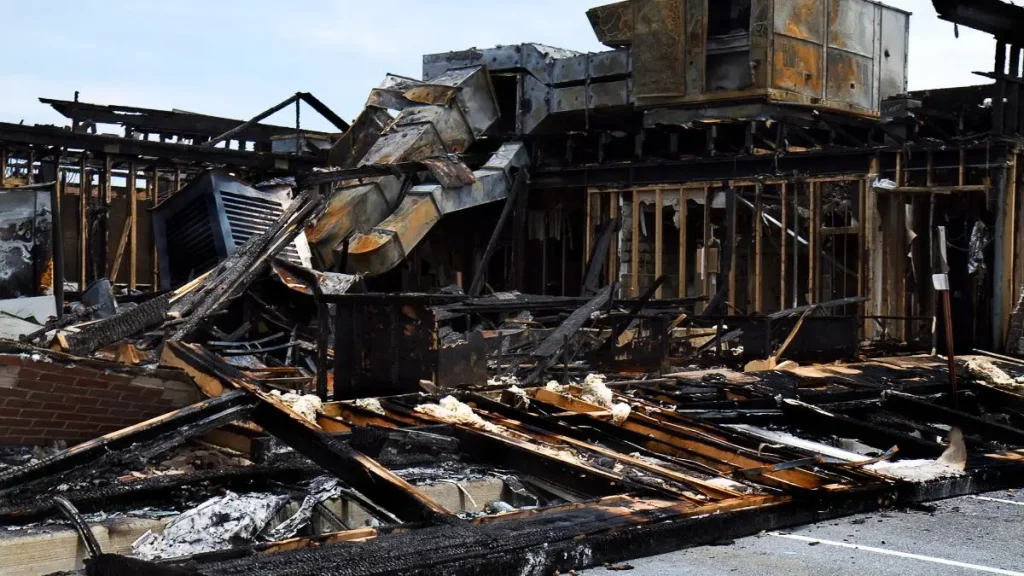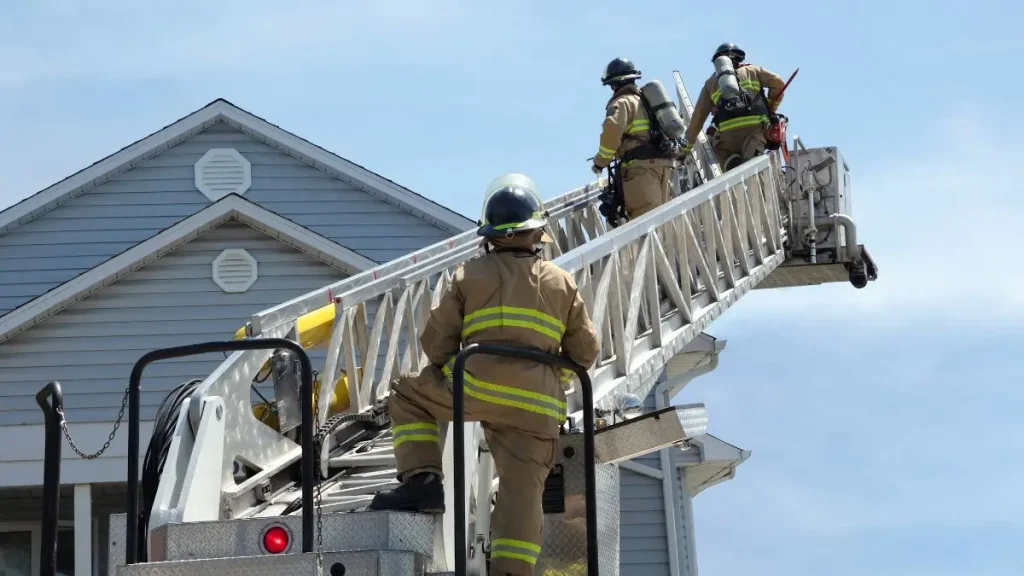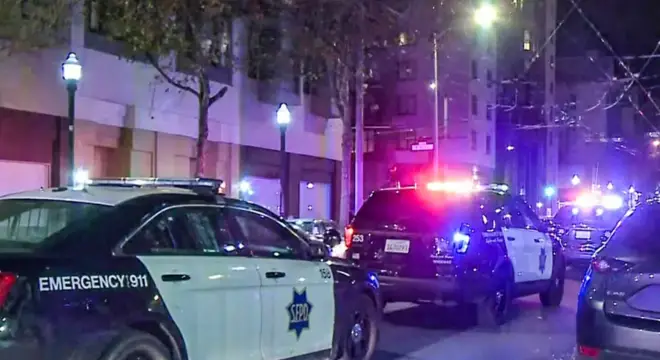Fire in Moreno Valley, California Destroys Home Near Highway Sixty Freeway
I saw the video before I read the news. Thick black smoke rising straight into the sky — the kind you don’t forget easily. It came from a house on Webb Street in Moreno Valley that caught fire just after 1 p.m. on Wednesday. And when I say the home was gone, I mean firefighters arrived to find it already swallowed by flames. No injuries were reported, which is the one piece of good news here.
But if you live in this part of California — or honestly, anywhere in the state — fires like this hit differently now. They’re not just accidents. They’re warnings.
The fire department hasn’t said yet what caused it. And that’s part of the problem. These fires keep coming, and most people still don’t know what sparks them until it’s too late.
As someone who’s followed these incidents closely, I’ll break down what actually happened here, how fast it escalated, and what this means for homeowners like you and me. Because this wasn’t just a “fire story.” It was a real reminder — and we need to pay attention.
How close have you ever come to a home fire? Would you know what to do if it happened on your street?
What I Noticed First — And What You Should Know About the Fire?
When I first came across this story, it was the KTLA report that laid out the facts clearly: a home on Webb Street in Moreno Valley caught fire around 1:03 p.m. on a regular Wednesday afternoon. Nothing unusual about the weather, no major alerts in place — yet within minutes, the entire structure was engulfed in flames.
Firefighters from the Riverside County Fire Department rushed to the scene. According to KTLA, the fire broke out in the 12100 block of Webb Street, and by the time they arrived, the house was already too far gone. Fortunately, no injuries were reported.
Now if you’re like me, you might be thinking: How does a fire spread that fast in broad daylight? The truth is, house fires don’t wait for dramatic circumstances — sometimes they ignite from the most mundane things.
That’s why incidents like this matter. They’re not just local news; they’re wake-up calls for anyone who lives in a similar neighborhood.
Fire Department Response & Emergency Management
When I really wanted to understand how intense the fire was, I turned to X (formerly Twitter). There, I found a clip shared by CAL FIRE’s Riverside Unit that honestly shook me a bit. The video showed thick, black smoke billowing high into the sky — the kind you could spot from miles away. You could literally feel the heat just watching it on screen.
— CAL FIRE/Riverside County Fire Department (@CALFIRERRU) July 9, 2025
If you’ve ever seen a structure fire from a distance, you know how surreal it feels. But what struck me most in that video was how fast it all unfolded. Within seconds, the flames were pushing out of every window. It wasn’t just a “house on fire” — it was a total loss.
And here’s the part that should concern you: fires like this can happen in any residential area. Even if you don’t live near open land or forest, even if your block looks peaceful. All it takes is one spark — electrical, kitchen-based, or something as simple as a faulty plug.
Similar fast-moving fires have also been reported elsewhere, like a house fire in Millington where overnight flames shocked even first responders.
What Caused the Fire? We Still Don’t Know — And That’s the Problem

When I looked deeper into the reports, one thing stood out: the cause of the fire is still under investigation. There’s no official statement yet about whether it was electrical, accidental, or something else entirely.
But here’s what I’ve seen happen in similar cases — and why it matters to you. In many neighborhood fires, the root cause is something preventable. Think old wiring, overloaded extension cords, or even a grill left too close to the siding. The trouble is, most of us don’t notice these risks until it’s too late.
Even more worrying? Fires caused by human error or neglect often lead to insurance complications or even legal consequences.
I’m keeping an eye on CAL FIRE’s feed for updates. But whether or not we get an exact cause soon, this is a reminder: don’t wait for answers after it happens — inspect your own home now.
A recent Lakeland home fire also left officials searching for answers, proving just how common unclear causes are in residential fires.
Moreno Valley Fire Trends & Risk Context
You might be surprised, but I’ve been tracking home and brush fires in Moreno Valley for a while. And here’s the thing: this fire isn’t an outlier — it’s part of a pattern.
This area has seen multiple incidents just this year alone. Fires near the 60 Freeway corridor, recreational spaces, and even other residential blocks have shown how vulnerable the zone is. Add in Riverside County’s dry weather, winds, and older housing stock — and you’ve got a perfect recipe for recurring fires.
I’m not saying this to scare you. I’m saying it because you should know your neighborhood’s risk level. Check if your property sits in a moderate or high fire risk zone.
Think of it like knowing your flood zone or earthquake risk — it doesn’t mean panic, it means preparation.
This fire made me rethink how vulnerable even regular neighborhoods are. What’s the fire safety situation like in your area? Drop a comment below — I’d love to hear how your community handles fire risks.
Homeowner Checklist: Fire Safety & Preparedness
After watching fires like this one in Moreno Valley, I started taking fire prevention at home way more seriously. And if you haven’t thought about it lately, trust me — now is the time.
Here’s what I changed in my own home, and what I recommend you do starting today:
- Clear brush and dry leaves from around the property — especially if you live near open lots.
- Install working smoke alarms in every room (and test them monthly).
- Prepare a “go bag” with essentials: IDs, medications, cash, backup charger — just in case.
- Create a basic evacuation plan with your family. Know where to meet if you’re separated.
- Look into Fire wise USA programs that teach community-level fire safety.
Even small steps like moving the BBQ grill 10 feet away from siding or switching to flame-retardant mulch can make a difference.
You don’t want to be the person who meant to do it later. Because fires like this don’t wait.
Recovery isn’t always straightforward — like in this Pensacola incident where an electrical fault displaced two residents and sparked urgent insurance reviews.
What Happens After the Fire — And What I’ve Learned About Insurance & Recovery

One thing no one talks about until it’s too late? What happens after the fire.
From my research — and from speaking to a neighbor who lost their garage in a fire last year — here’s the real deal:
- Home insurance will only help if your coverage is updated. Many people don’t factor in new construction costs or accessory items like sheds or garages.
- Moreno Valley’s rebuild cost is around $300–$400 per sq. ft., depending on the neighborhood.
- Some folks wait weeks to months for claim approvals — if their documents aren’t already prepared.
- If you rent, renter’s insurance is your lifeline — don’t assume the landlord covers your stuff.
I recently sat down and reviewed my own policy, and I suggest you do the same. Ask your provider:
- Does my policy cover full rebuild costs?
- Are temporary accommodations included?
- What’s the deductible for fire damage?
If you’re underinsured or uninsured, Red Cross and FEMA sometimes offer limited assistance — but it’s better to be prepared than dependent.
What You Can Do Now — Even If You Weren’t Affected?
Look, maybe this fire didn’t happen on your street. But if you’re reading this, you’re already one step ahead. Don’t wait for a firetruck siren outside your window to act.
Here’s what I suggest you do right now:
- Follow CAL FIRE and your local fire department on social media. Their alerts are faster than news sites.
- Bookmark local evacuation maps — especially if you live near hills or open land.
- Join a neighborhood alert group like Nextdoor, WhatsApp groups, or city text-alert systems.
- Check if your roof, vents, and gutters are compliant with current fire safety recommendations.
Even if you think you’re safe now, fires are becoming more frequent and unpredictable — especially in places like Riverside County. If I’ve learned anything, it’s that preparedness is the new peace of mind.
Final Thoughts
Fires like the one on Webb Street don’t just burn down walls — they expose the cracks in our readiness. I’ve seen it too many times now to brush it off.
If there’s one thing I’ve learned from this incident, it’s this:
- You don’t need to live in fear — you need to live prepared.
- Check your alarms, review your policy, talk to your neighbors.
- Because the safest home is the one that planned ahead.
Want to stay informed about home safety and real-life incidents like this? Visit our website Build Like New for more stories and practical protection ideas.
Disclaimer: This article is based on available information as of publication and is intended for general awareness. Details may evolve as official investigations progress. Always refer to your local fire department or emergency authorities for verified updates and guidance.
⭐ Subscribe to Our Newsletter
Subscribe to the publishers newsletter to receive the latest news and updates directly in your inbox


